The Story of Culture and Arts
- Image resource of Korean history
- Documents from History TextBooks
- Culture & Art Stories from Korean History
- Culture & Art Stories from Korean History - Korean
- National Institute of Korean History
- History net
- About the site
- Introduce
-
Numerous topics related to Korean culture and art are mentioned in middle and high school national history textbooks, but most of them are briefly described by era, making it difficult to understand their concepts, transition processes, and characteristics.
<Culture & Art Stories from Korean History> produces and provides video materials based on expert commentary on the flow, change process, characteristics and characteristics of each major topic in the field of culture and art in Korean history.

Scenario
When the ports of Korea opened, foreign visitors to Korea called it the “Country of Topknots.”
“When a boy is betrothed, ...his hair is then put up in the topknot of which the native is so proud...” - Horace Newton Allen / Things Korean
“Grotesque though this head-dress seemed at first, it presently assumed dignity.” - Elizabeth Keith / Old Korea: The Land of Morning Calm
The sight of people with their hair up in topknots and wearing gat hats truly stuck out to Western visitors. The hairstyle was related to the coming-of-age ceremony. Let us now take a look at this coming-of-age ceremony.
Meaning and History of the Coming-of-Age Ceremony
The first part of the word gwallye, or coming-of-age ceremony, means “hat.” After this ceremony, a boy was recognized as a man and could wear a topknot and hat. Actual records of this ceremony being held are found in the Goryeosa.
After holding the ceremony for Prince Wangju, the son of the king, the crown prince established an inner command, then he held a great feast in Jangsaengjeon Hall for his servants. - Goryeosa (History of Goryeo), February, 965 (Year 16 of King Gwangjong)
The record states that the crown prince and other princes would hold the ceremony, and after it, they would hold a feast for their servants.
In the Joseon period, not only the royal family but also military families and officials were said to have held this ceremony.
“Because the coming-of-age ceremony was about becoming an adult, one needed to have the attributes of an adult. To participate in society, one must properly learn how to interact with others and how to behave. The royal family was different from other families in that they held the ceremony at age 10 or 12. An heir to the throne needed to be quickly appointed and prepared to succeed to the throne.” Kim Jiyoung, Senior Researcher / Gyujanggak Institute for Korean Studies, Seoul University
There was a coming-of-age ceremony for women as well. A young woman’s long hair was braided and put up with a pin. This was usually held when they were 15 and in connection with their wedding ceremony.
We should also give consideration to the ceremonial customs of the past and remove the burdensome parts.
They should be made easy for the people to carry out.
In this way, poorer families may also participate.
If all can partake, there shall be no regrets.
- Yi Ik, Sanjeol gwanui (The Abbreviated Coming-of-Age Ceremony), “Japjeo” (Miscellaneous Writings), Seongho seongsaeng jeonjip (Collected Works of Master Seongho)
There were efforts to simplify the ceremony and reduce its cost to make it more accessible to all classes. By doing this, poor scholars or commoners who wanted to hold the ceremony were now able to do so.
“Placing the tall hat so magnificently on one’s head and wrapping oneself in the robes, this is not done for extravagance but to impose a sense of responsibility. If one merely participates in a ceremony but does not do one’s duty, is one any different than a child?” - Hyeonjong sillok (Veritable Records of King Hyeonjong), March 9, 1670 (Year 11 of King Hyeonjong)
In Joseon society, the ceremony was considered very important. Putting the hair in a topknot and donning the hat were meant to stress the “heavy responsibilities” of dulthood.
“This isn’t just a ceremony where you change clothes. The fact that this culture of encouraging people from classes of society to be responsible and considerate of others became a primary component of that society’s cultural ethos just shows how much of an impact this ceremony has had.” Kim Jiyoung, Senior Research / Gyujanggak Institute for Korean Studies, Seoul University
The Process and Effects of the Coming-of-Age Ceremony
The details and methods for carrying out the ceremony are recorded in various texts. How is the ceremony being passed down and reproduced today?
This is Yangdong Village in Gyeongju. Every year, a coming-of-age ceremony is held for those becoming adults. Let’s take a look at the main parts of the ceremony.
On the day of the ceremony, they meet the adults who will assist with the ceremony.
Someone who is virtuous and has good manners is chosen to be the bin, or person who oversees the ceremony.
The first part of the ceremony has begun. This is the sigarye.
The boy’s hair is pulled up into a topknot and covered with a chipogeon, or black cloth. The clothes he changes into are standard adult house dress.
Next is the jaegaerye.
The boy puts on a yugeon (a cap worn by Confucian scholars) and changes into a scholar’s robe.
During the samgarye, the boy puts on the gat. He then puts on clothes a man must wear when he is performing social functions.
The clothes for the ceremony can differ depending on the family, region, and social status. The changing of hats and robes three times signifies the person will gradually do important things as an adult.
Once the samgarye is finished, the boy is given alcohol. This part is a pledge to be an exemplary adult.
At the end, the boy is given an adult name. Once someone is given a name, they are respected, even if they are young.
Each part of the ceremony includes a congratulatory message. These messages advise the boy to take the messages and strive to be a virtuous man.
“Through this traditional ceremony, I feel like I’ve truly become an adult and must now take on the responsibilities that come with being an adult. I think this was a great opportunity to learn things from our elders.” Lee Dongjun / College Student
“The ceremony builds a network with the bin of the ceremony. These men are young adults, new to society. Those who go out into society are introduced to other adults, and they take on the characteristics of an adult at that stage and part of life. The ceremony is about networking and meeting others.” Shin Sang-gu / President, Yangdong Institute of Culture
...Without a top-knot he is never considered a man, addressed with high endings, or treated with respect. - L.H. Underwood / Fifteen Years among the Top-knots
Towards the late Joseon period, the topknot no longer denoted a person’s class, but rather whether or not he was an adult. It was also a symbol of a man’s pride and respect.
This was reflected in the ceremony with men’s hair decorations. Men used a pin to secure their topknot. The manggeon that covered the hair was an understated way of looking cool. Assorted hat strings were also very trendy.
The topknot and ceremony, which had been a symbol of adulthood, gradually lost favor after the decree banning topknots.
In the early 1970s, the Korean government established Coming-of-Age Day. Once a coming-of-age ceremony was added to the Family Rites Standards, interest in the ceremony began to rise.
Isn’t it time we reflect on the meaning of the ceremony, which is to consider the responsibilities and duties of an adult, and come up with an appropriate coming-of-age ceremony for today’s adults?
[Epilogue]
Must-Know Facts on Culture and Art in Korean History
1. During the gwallye, the ritual for men is to put their hair in a topknot and put on a hat.
2. During the gyerye, the ritual for women is to put their hair up with a pin.
3. The meaning of the ceremony is to announce to society that one has become an adult and to emphasize the role and responsibilities of an adult.
Life & Folklore
17 films-
 Haenyeo, female divers in Jeju08:52
Haenyeo, female divers in Jeju08:52 -
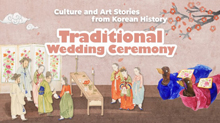 Traditional Wedding Ceremony08:22
Traditional Wedding Ceremony08:22 -
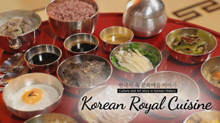 Korean Royal Cuisine08:22
Korean Royal Cuisine08:22 -
 Gat and Traditional Headwear of Korea08:48
Gat and Traditional Headwear of Korea08:48 -
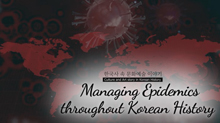 Managing Epidemics throughout Korean History08:48
Managing Epidemics throughout Korean History08:48 -
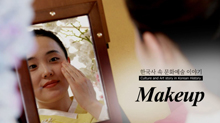 Makeup07:52
Makeup07:52 -
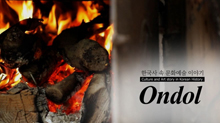 Ondol, Korea's Underfloor Heating System08:40
Ondol, Korea's Underfloor Heating System08:40 -
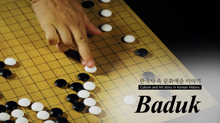 Baduk08:32
Baduk08:32 -
 Four Treasures of the Study09:34
Four Treasures of the Study09:34 -
 Farming Implements09:12
Farming Implements09:12 -
 Coming-of-Age Ceremony08:41
Coming-of-Age Ceremony08:41 -
 Ginseng08:44
Ginseng08:44 -
 Tobacco08:27
Tobacco08:27 -
 Kimchi08:37
Kimchi08:37 -
 Relief Crops08:37
Relief Crops08:37 -
 Korean Currency09:28
Korean Currency09:28 -
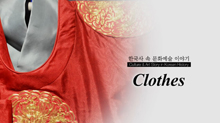 Clothes08:20
Clothes08:20

